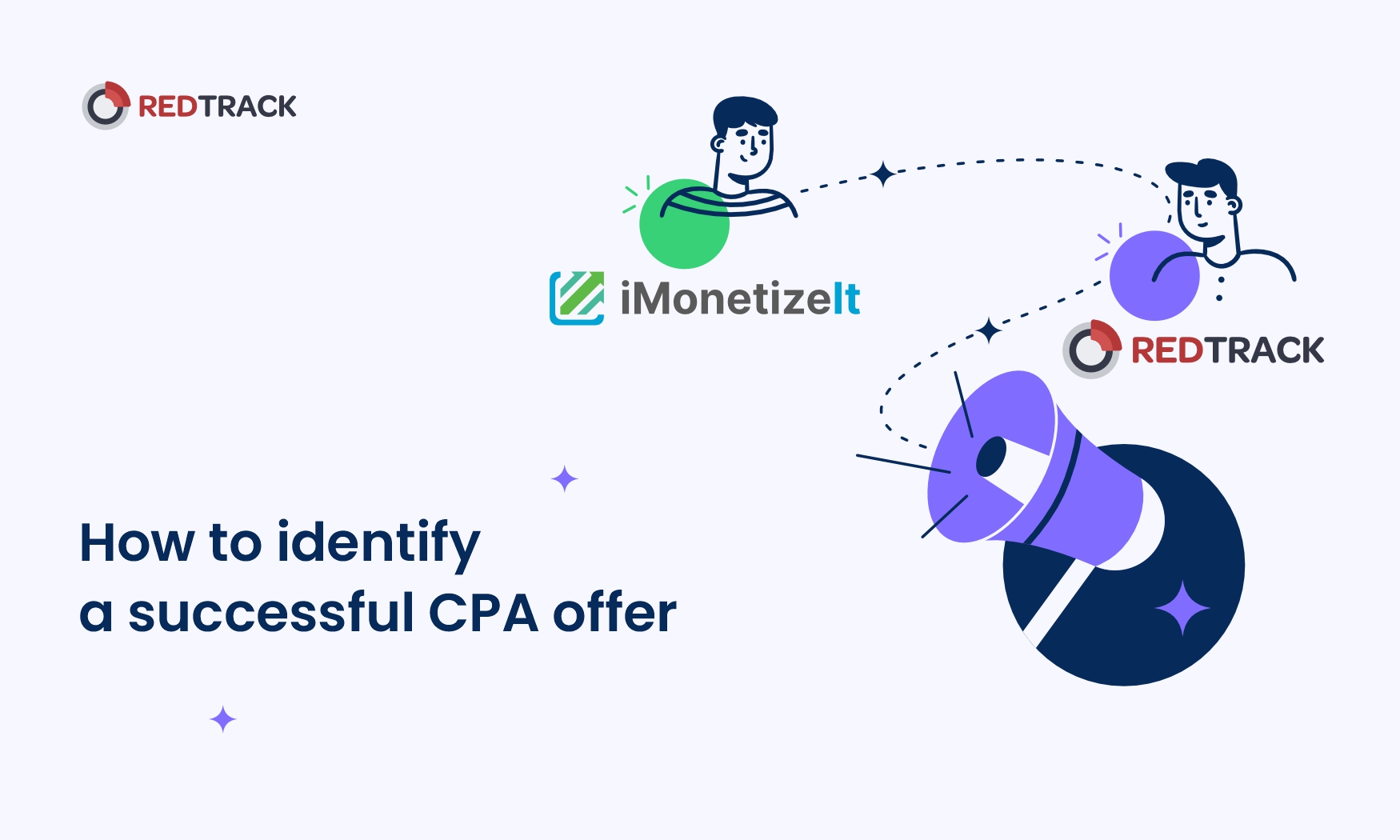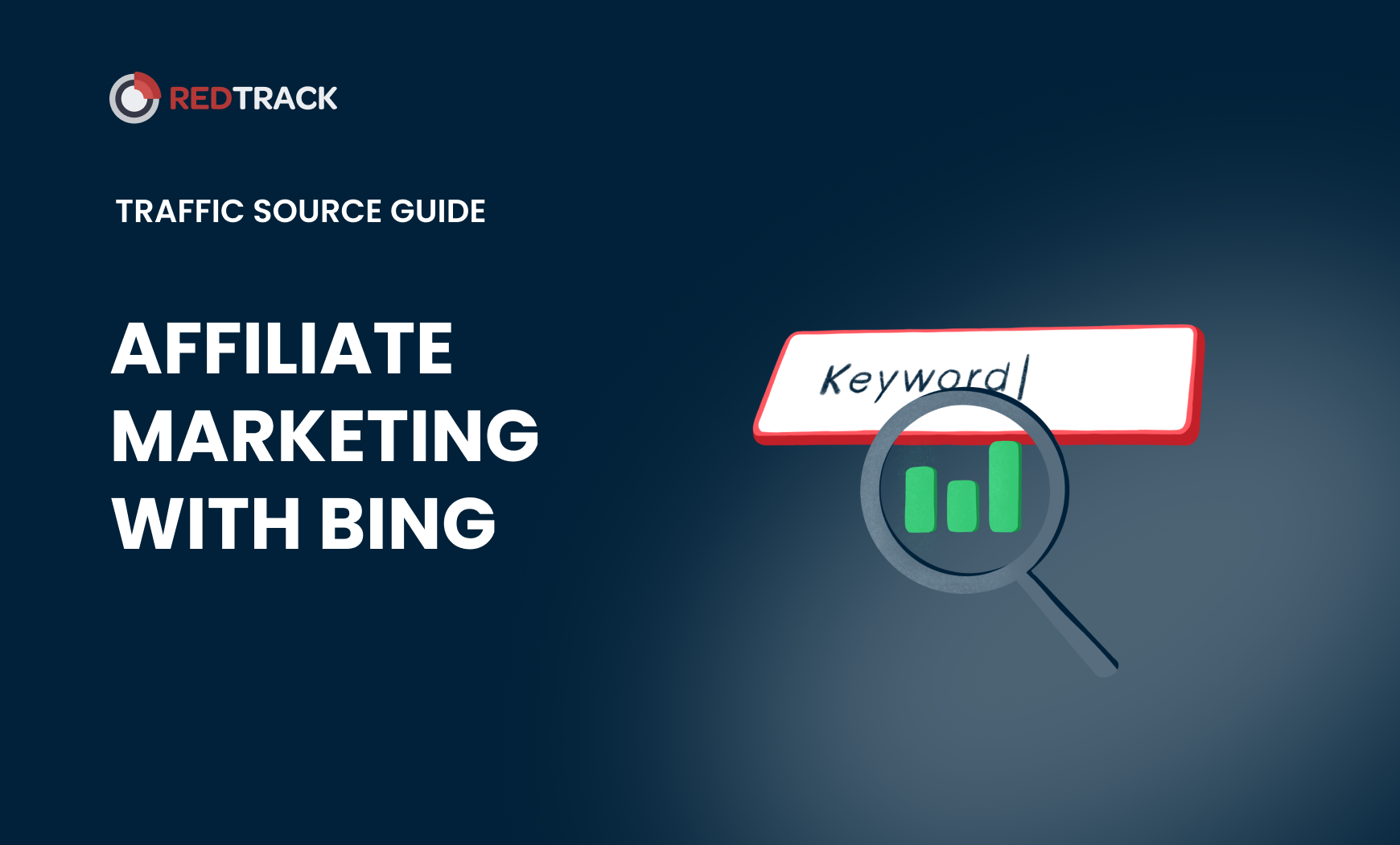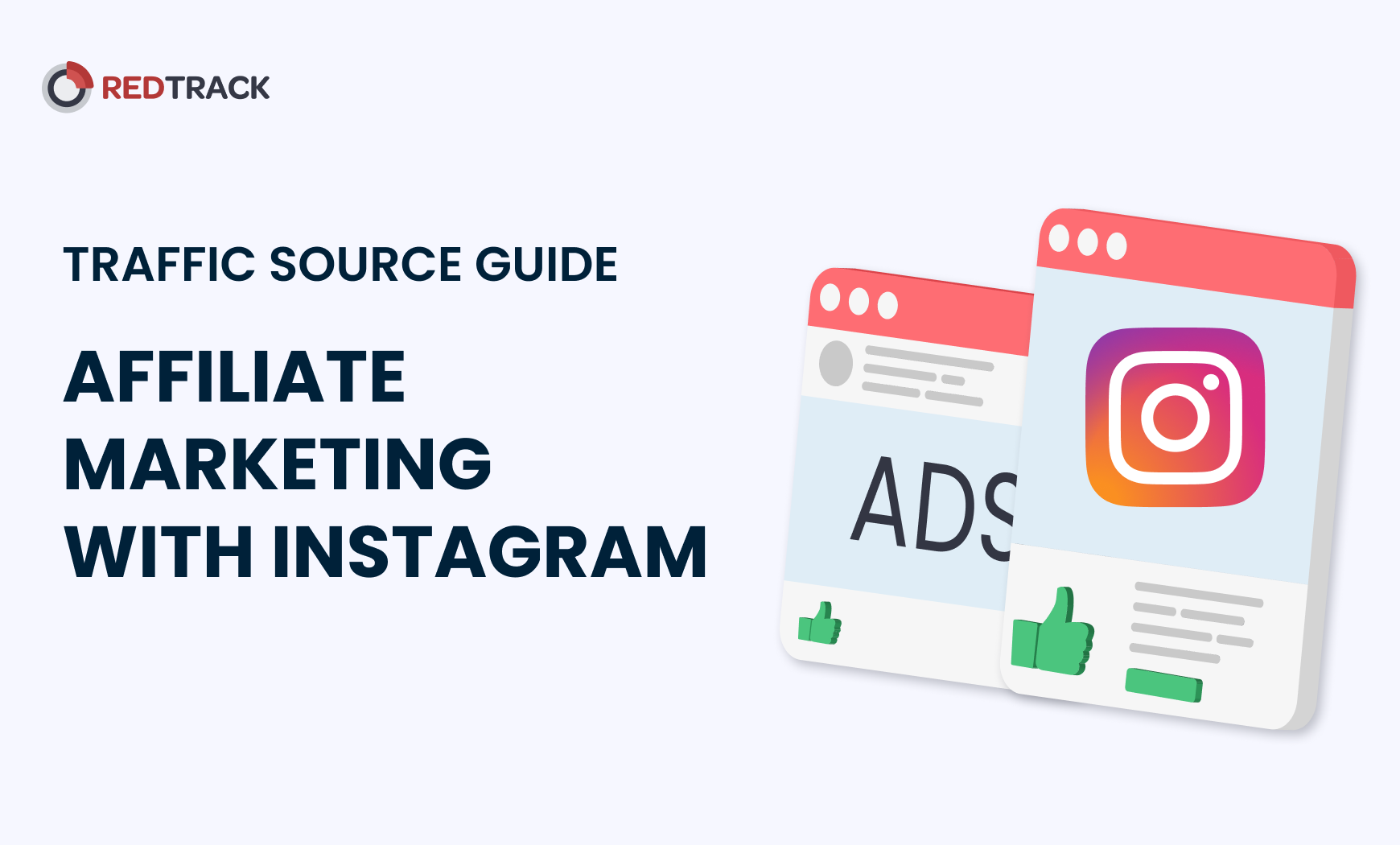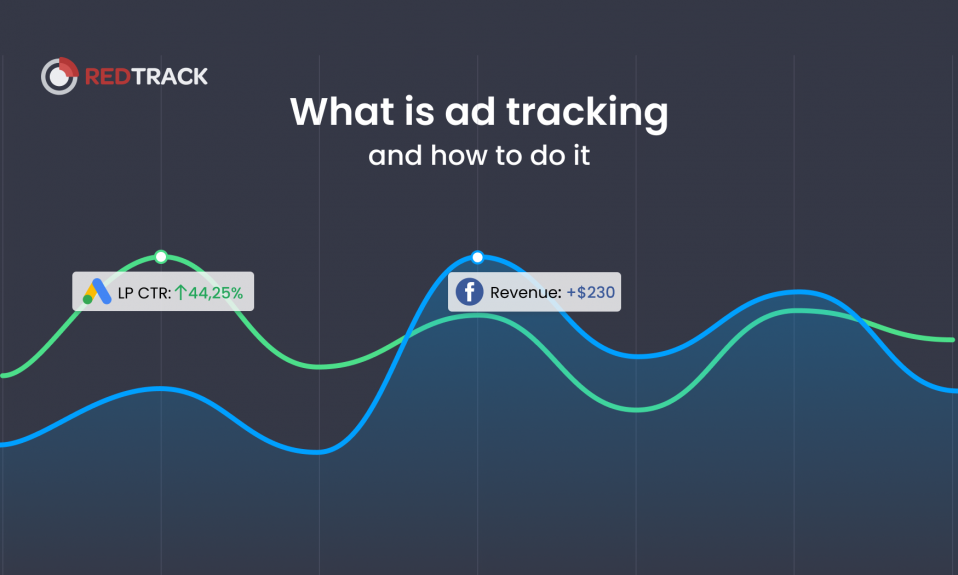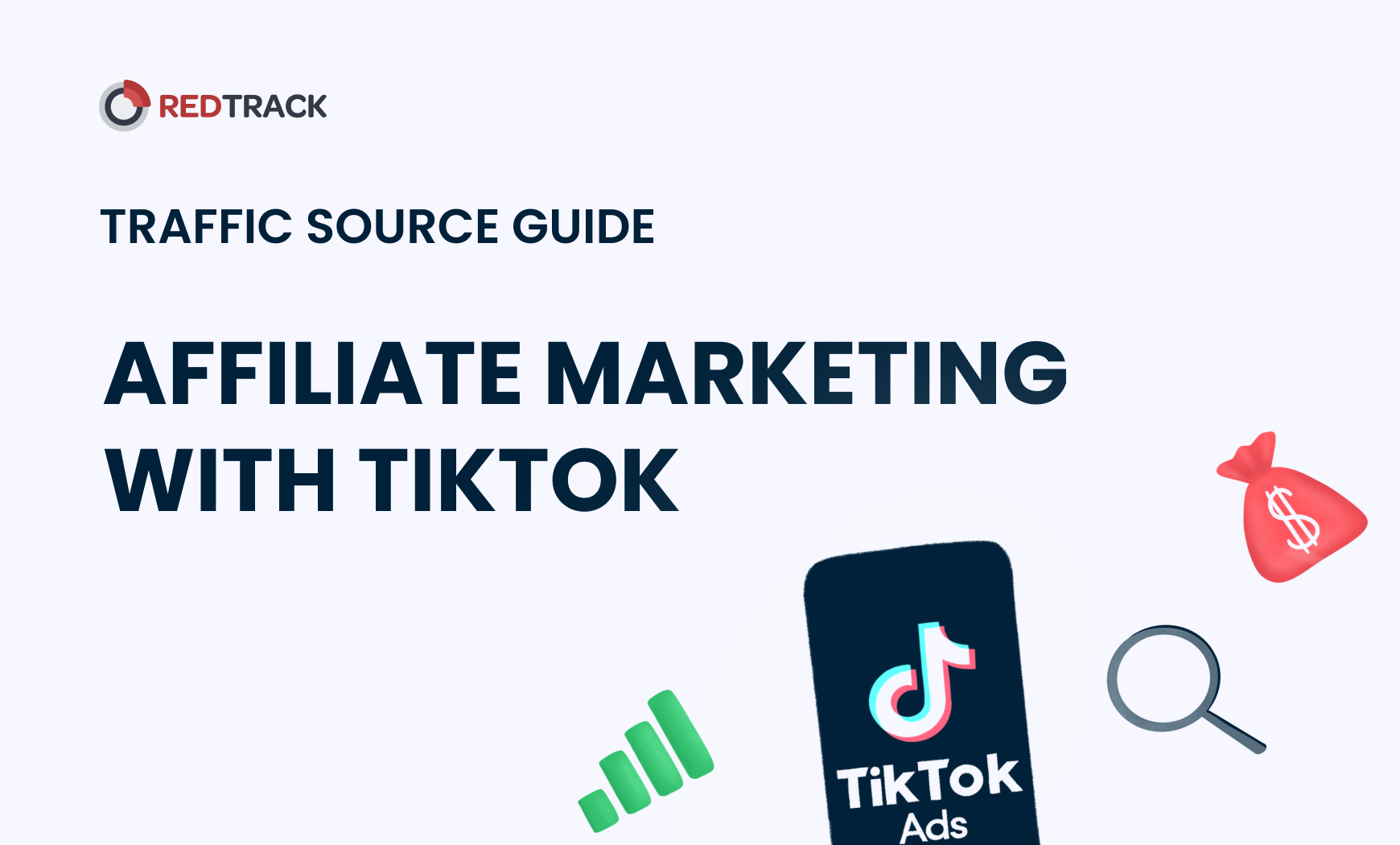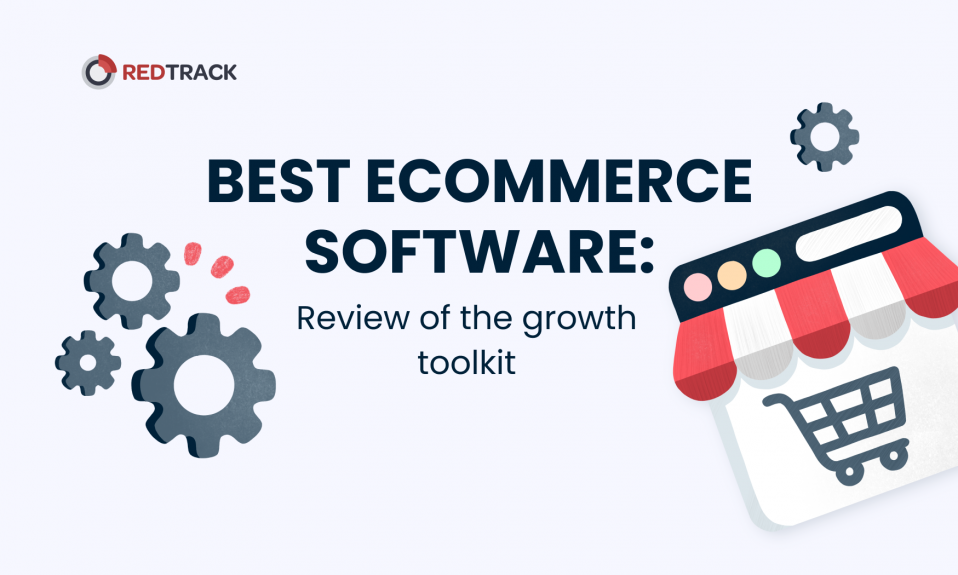
Even though there’s no shortage of ways to generate traffic, 78.3% of affiliate marketers use SEO to climb up to the top of Google. This strategy stood the test of time despite challenges brought by every single algorithm update. But its face has changed a lot over the years. So, If you want to succeed in SEO affiliate marketing, you must use the latest tactics crafted by seasoned professionals.
Great news: they all are right here! Bizzoffers Affiliate Program team has shared with us actionable insights they and their partners use to grow affiliate sites.
8 Best SEO Tactics to Promote Affiliate Blogs
Since a universal recipe for success doesn’t exist, why not make your own? These tried-and-test SEO affiliate tactics will help you reach the top spot in search engine rankings, drive more traffic, and ultimately increase sales.
Tactic 1: Do SEO Audit for Your Affiliate Website
Did you know that 74% of Internet consumers in the U.S. visit numerous affiliate websites before making a purchase? According to studies, they prefer the top-ranking quality websites over those that don’t make it to the first page of search results.
So, even if your SEO affiliate sites are doing alright now, it’s always a good idea to run a website audit and check how your SEO is performing.
You probably have done it a million times before, but it’s still a good idea to go over our short checklists. They сover the most important areas you have to focus on during your audit (and include our favorite tools).
Technical SEO Checklist
If you want to ensure your technical SEO is spot-on, answer these questions:
- Is my site’s speed optimal? Check it now using Pagespeed!
- Is my site mobile-friendly?
- Do I have any broken pages and links to fix? Find out with Broken Link Checker!
- Have I enabled HTTPS?
- Does Google Search Console detect any issues?
- Are there any duplicate meta titles and meta descriptions?
On-Page SEO Checklist
Let’s go over some key questions to make sure your on-page SEO is working well:
- Do my pages have a logical structure (H1, H2, H3)?
- Are my blog posts optimized around specific, relevant keywords?
- Is my content comprehensive, valuable, and engaging for readers?
- Do my title tags accurately reflect the page content? Do my meta descriptions compellingly summarize what the page is all about?
- Does my website have a good interlinking between pages?
- Does my site have relevant, reputable external links?
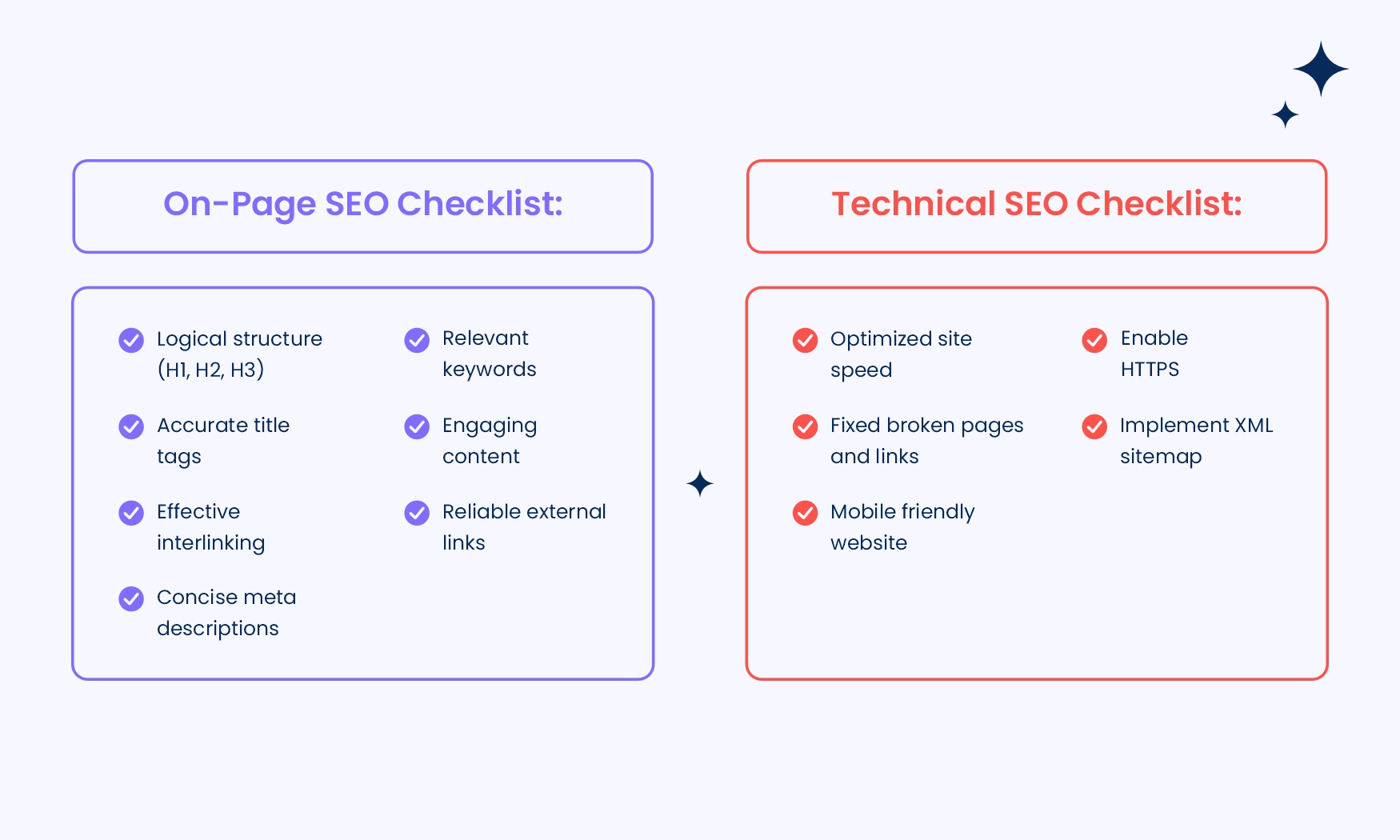
Tactic 2: Use Non-Generic Keywords for Maximum Visibility
Posts that contain target keywords get a 45% higher CTR compared to those that don’t.
So, if you want to catch the eye of both search engines and your target audience, sprinkle the right keywords throughout the text with a well-thought strategy in mind.
Having one guarantees that you won’t just have more searchers land on your page. You can make those posts do different jobs for your SEO affiliate campaign, whether that’s driving more traffic or increasing conversions. Just by placing the targeted keywords in the right spots!
Let’s look at some specific keyword types that are especially useful for your SEO affiliate sites.
Long-Tail Keywords
Using long-tail keywords opens many doors for affiliate SEO.
First, long-tail low-volume keywords are easier to rank for compared to the high-volume terms that all your competitors are chasing. You’ll get to the first page of Google faster with long-tails.
Sure, targeting long-tail keywords brings less traffic, but it’s highly targeted traffic. Attracted by long keywords, searchers who land on your page know what they’re looking for. This means you’re gonna see way higher conversion rates.
Finally, long-tail keywords are your ticket to Google’s featured snippets. They increase your chances of ranking for target search terms. Just quickly add long-tails to your FAQ sections! By using them, you also optimize your SEO affiliate sites for voice search, which takes up 20% of Google searches.
Buyer Intent Keywords
You know better than anyone how long it takes to nurture prospects and turn them into buyers. That said, there are plenty of searchers out there who are ready to buy a product RIGHT NOW.
You can cater directly to those ready-to-purchase customers and create content filled with buyer-intent keywords so that they can find your affiliate SEO website faster.
These keywords typically contain action-oriented words:
- Get + product + today
- Purchase + product
- Buy + product + now
- Cheap + product
You can also target location-based keywords that include phrases like “near me” or your target location city/country name to attract local buyers. Recent statistics show that almost 50% of Google searches are local, so don’t miss out on this opportunity.
Brand Keywords
Branded keywords are even more specific than buyer intent keywords.
Users who type them into the search box are interested in what you have to offer, so it takes little to no effort to convert them. You’ll see the organic traffic grow and the conversion rates go up.
Plus, Google loves to rank branded keywords highly because they show a strong brand presence.
Tactic 3. Choose a SEO-Friendly Domain Name
Tell me what’s your domain name and I’ll tell you how high you rank on Google.
In affiliate SEO marketing, the domain name is one of many ingredients for success, so don’t forget to work on it if you’re looking to start a new niche blog. You can boost your site’s visibility and ranking by choosing a SEO-friendly name that is:
- Easy to remember: The catchier your name, the more people come back to your site. That signals to Google that your content is valuable, so it’ll rank you higher.
- Short and simple: This one comes from the previous point. Short, simple domain names get more traffic because people find it easier to remember and type them into a search bar.
- Keyword- and brand-optimized: Ideally, you need a domain name that includes a relevant keyword plus a term that speaks to the nature of your business.
Tactic 4. Optimize Your Existing Content for Maximum Reach
If you have a reputable affiliate website, the last thing you need to do is to start fresh.
Your blog likely has some posts that are already doing pretty well. They just need a little tweak to get you high on Google’s ranking.
Here are our favorite SEO tips for affiliate marketing that can help you fine-tune your existing content for maximum reach:
- Put affiliate links in top-performing articles. Identify posts that get the most traffic with SEO analytics tools. Then, rewrite some content pieces to add affiliate keywords in a natural way. Once you’re done, link these keywords to your affiliate products.
- Work on your meta titles and descriptions. Make them clear, simple, captivating, and keyword-friendly to increase your CTR and visibility.
- Add new valuable information to old posts. Check your top-performing posts one more time and see if you can add new information and remove outdated facts, statistics, or broken links.
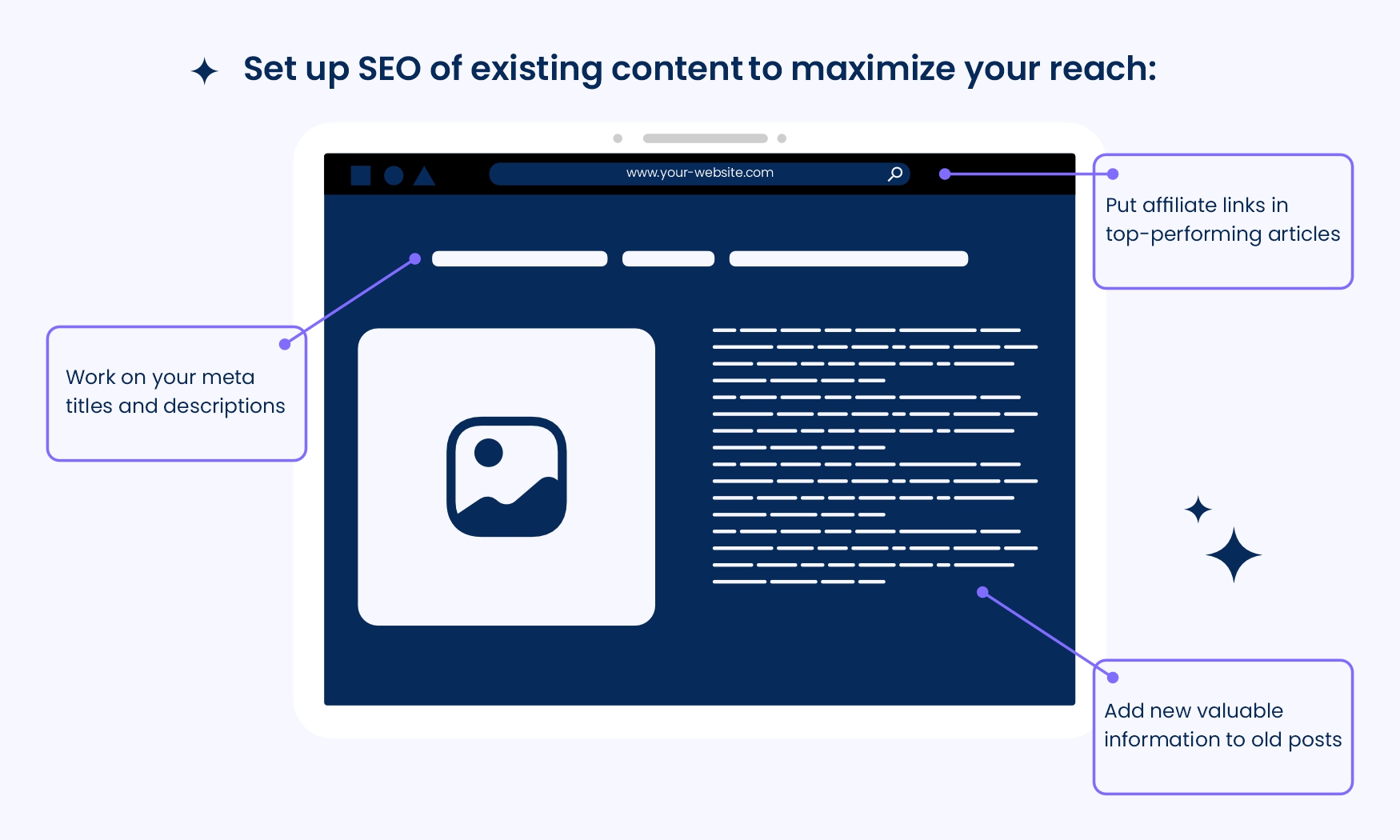
Tactic 5. Craft New Content That Showcases Experience
SEO experts state that one of the key ranking factors in 2023 is quality content.
In 2024, nothing has changed. Online users still crave valuable, informative content. And you still have to scratch your head to create this SEO affiliate content that answers their questions, solves their problems, and promotes your affiliate products. Too many goals for one post, right?
While we can’t take the creative work off your shoulders, we can suggest the top 4 post types that can check these boxes for you:
- Long-Form Guides. These are in-depth posts that kill two birds with one stone: they bring value to your reader by exploring your product and give enough room to place affiliate links.
- Comparison Posts. Product comparison is one of the highest-converting content types, as it sits right at the bottom of the funnel. Leverage these posts to show how your product stands against the competition.
- Case Studies. Here, you can give a detailed explanation of how your affiliate products can help your readers solve their issues.
- List Posts. These posts target users who are ready to take action and purchase the best products available (including yours).
Tactic 6. Leverage the Generative AI Wisely
79.3% of affiliate marketers are creating content with AI tools, and for good reason. The benefits of AI content generation are endless.
Tools like ChatGPT or Jasper let you produce large Affiliate SEO content volumes while putting less time and effort into it. However, the quality of mass-produced AI content is poor, to say the least.
If you don’t want Google to take your site down from SERPs and lose your audience’s trust, generate informative and valuable content by following our tips below:
- Have somebody proofread it. A little human touch never hurts. If AI content generation has become a routine part of your SEO affiliate marketing strategy, ask somebody on your team to proofread it.
- “Feed” AI with useful info. Create a portfolio of your product with a detailed description of its features, benefits, pros, cons, etc. The more info you’ve got, the more precise and original output you’ll get. Just send it to AI before running any other commands.
- Use detailed and high-quality prompts. Describe tone of voice, structure and other nuances you want AI to include in your post. This will take you a step ahead from your competitors who rely on generic prompts.
- Cut down the fluff. Nobody wants to read about the “ever-changing digital world” or “innovative solutions.” Get straight to the point and remove all the repetitive constructions that AI loves to use.
Tactic 7. Automate Your Outreach Campaigns
Google says that backlinks are not essential, but statistics prove the opposite.
The top-ranked pages have 3.8x more backlinks than lower-ranked ones.
So, if you want your affiliate marketing sites to appear on the first pages of search results, get high-quality backlinks from reputable sources in your niche. Usually, you need to email website owners, explaining how your content can benefit their readers and asking for a backlink.
Sounds a bit time-consuming, doesn’t it? You’re right. We’ve just described the basic outreach strategy. And it’s not as effective as using automated solutions.
The market is filled with advanced multi-channel outreach tools that are waiting for you to explore. What are they? Just as the name implies, multi-channel outreach software lets you send pitches to potential partners via various channels, such as social media, instant messengers and email. If you’re looking for a simpler option, play around with an automated outreach feature provided by LinkedIn.
Tactic 8. Publish Guest Posts on Niche-Relevant Sites
We’ve been around for years in SEO for affiliate marketing, and so has guest posting. But if you can do it right, why not resort to it? With our proven tips, you’ll reap all the benefits that guest blogging has to offer.
- Pick niche-relevant sites. That’s where your potential buyers are looking for fresh and valuable information.
- Sprinkle relevant links to your blog or landing page throughout the post (but not your affiliate links; most website owners don’t like that). Another good place to put these links is an author bio.
- Create special offers for visitors who come from your guest post.
The Impact of Recent Google Updates on Affiliate Marketing SEO
Google updates are hard to keep up with, even for SEO affiliate professionals. In the past five years, it has rolled out 36 major algorithm updates, which have affected SEO rankings for all websites out there, including ours (and yours too)
We did a bit of homework to walk you through the recent changes in Google’s algorithm that have a direct impact on the SEO affiliate marketing landscape:
- March 2024 core algorithm update. Google has started penalizing websites with poor-quality AI generated content. However, experts say that this change affects only websites with purely AI generated content. If you’re mixing it with human-written content (or edit it like we do), you’re safe.
- November 2023 update. If your blog’s content is primarily product reviews, Google will go through them all. SEO affiliate sites that don’t meet Google’s quality guidelines may see a drop in their rankings.
- September 2023 Helpful content update. This one deals with “fake” content updates and sites that host third-party content that has nothing to do with the site’s main focus.
Bottom Line
If you’re busy creating your SEO affiliate marketing strategy, take our tips as a guide to getting the top spots on Google Search. There’s no need to follow them in the right order. Feel free to mix, tweak, and experiment with the best SEO strategies to see what works for your site. Still, we recommend using all of them if you’re ready for huge traffic volumes and conversions. Good luck!



